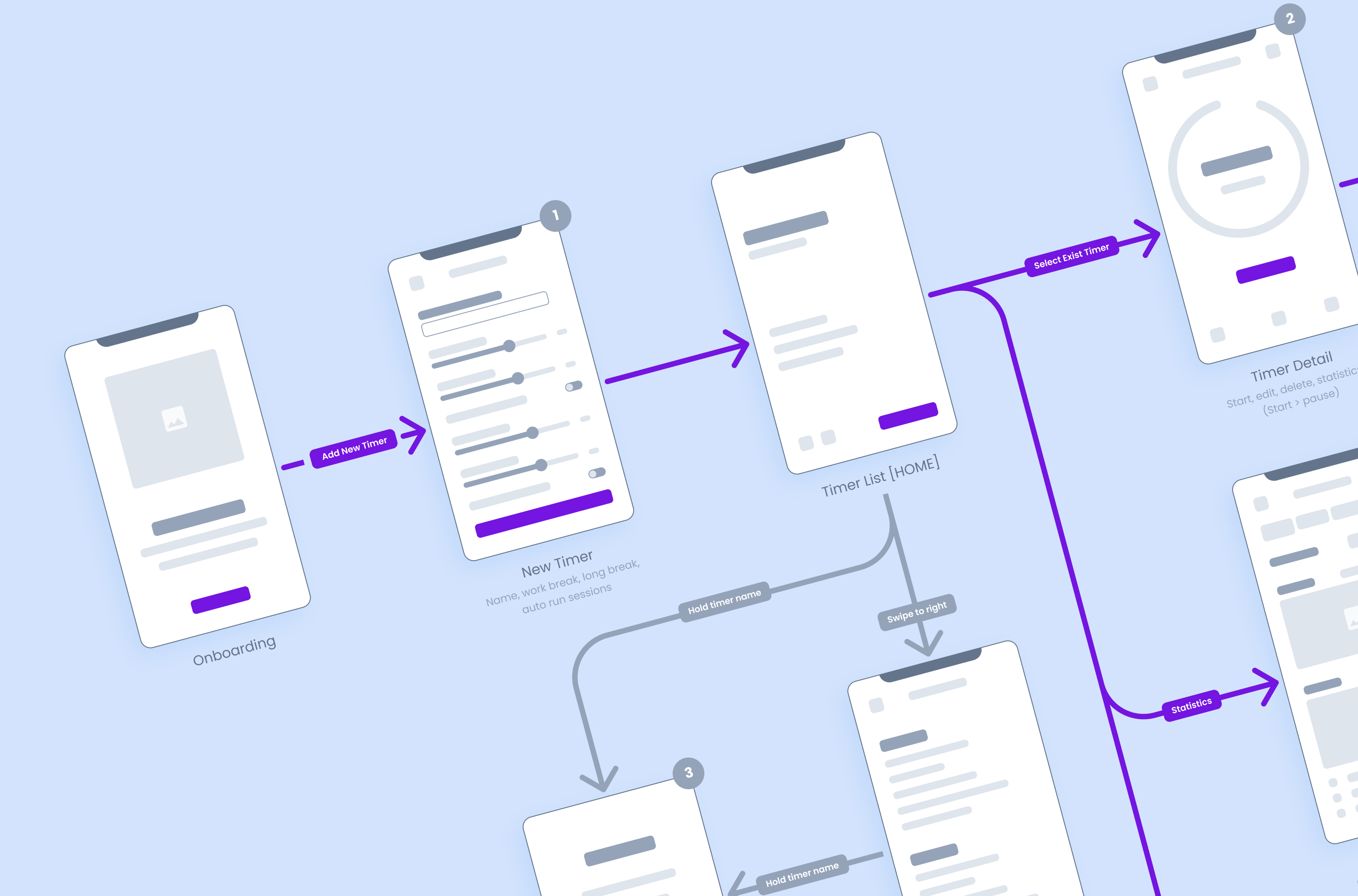Essential Principles of Effective Web Design

Creating a visually appealing and functional website is crucial in today's digital age. An effective web design not only attracts visitors but also enhances their user experience, encouraging them to stay longer and explore more. Whether you're building a personal blog or a business site, understanding the core principles of web design is essential. This article will delve into the fundamental aspects you need to consider for successful website development.
Responsive design is the backbone of modern web development. It ensures that your website looks good and functions well on any device, from desktop computers to smartphones. With the increasing use of mobile devices, having a responsive design is no longer optional—it's a necessity.
The Importance of Mobile Compatibility
Visitors are likely to leave a site if it doesn't display correctly on their mobile devices. This can lead to high bounce rates and lost opportunities for engagement. A responsive design adapts to various screen sizes and orientations, ensuring a seamless experience for all users. This adaptability not only improves user satisfaction but also boosts your site's search engine ranking, as search engines prioritize mobile-friendly websites. Moreover, a mobile-compatible site can enhance accessibility, making your content available to a broader audience.
Key Elements of Responsive Design
Implementing responsive design involves using flexible grids, scalable images, and CSS media queries. Flexible grids allow for fluid layouts that adjust according to the screen size, while scalable images ensure that visuals maintain quality without slowing down load times. CSS media queries enable specific styling rules to be applied based on device characteristics, such as width or orientation. Utilizing these elements ensures your website remains visually consistent across all devices. Furthermore, embracing a mobile-first approach in your design process can facilitate the creation of a more streamlined and user-friendly interface.
Tools and Frameworks for Simplifying Responsive Design
Tools like Bootstrap or frameworks like Foundation can simplify the process, providing pre-designed components that are easy to customize. These tools come equipped with responsive grid systems and a variety of UI components, helping you quickly build a responsive layout. They also offer extensive documentation and community support, making them accessible even to those new to web development. Additionally, testing tools such as BrowserStack allow you to preview your design on multiple devices and browsers, ensuring consistent performance across platforms. By leveraging these resources, you can efficiently implement responsive design without compromising on quality.
Prioritizing User Experience
The user experience (UX) is a critical aspect of web design that focuses on how users interact with your site. A well-designed UX can significantly impact your site's success, influencing factors such as user engagement, conversion rates, and brand loyalty.

Navigation and Accessibility
Effective web design ensures that navigation is intuitive and accessible. Users should be able to find what they're looking for quickly and easily. Clear menus, visible links, and a logical page structure all contribute to a positive user experience. Implementing breadcrumbs and a search functionality can further assist users in navigating your site efficiently. Moreover, accessibility features, such as keyboard navigation and screen reader compatibility, broaden your audience by accommodating users with disabilities.
Visual Hierarchy
Visual hierarchy refers to the arrangement of elements on a page in a way that reflects their importance. By using different sizes, colors, and placements, designers can guide users' attention to the most critical parts of a web page, such as calls to action or key content. This approach not only enhances readability but also ensures that users quickly grasp the main message. Utilizing whitespace effectively can also help emphasize important elements and create a more organized layout. Consistency in design elements across pages further reinforces the visual hierarchy, creating a cohesive user experience.
Enhancing User Engagement
Engaging users through interactive elements can significantly improve their experience on your site. Features such as animations, hover effects, and microinteractions can make browsing more enjoyable and intuitive. Providing personalized content based on user behavior or preferences can also increase engagement and retention. Furthermore, offering multiple ways for users to interact with your site, such as comment sections, forums, or live chat support, encourages active participation and fosters a sense of community. By prioritizing user engagement, you can build stronger relationships with your audience and encourage repeat visits.

Emphasizing Visual Appeal
A visually appealing website not only attracts visitors but also reinforces brand identity. The design should reflect the site's purpose and the brand's personality, using colors, typography, and imagery effectively.
Color Theory and Psychology
Colors evoke emotions and can influence perceptions. Understanding color theory helps in selecting a color palette that aligns with your brand and appeals to your audience. For example, blue can convey trust and professionalism, making it a popular choice for corporate websites. Additionally, warm colors like red and orange can evoke excitement and urgency, suitable for calls to action. It's also essential to maintain color consistency across your site to strengthen brand recognition. By strategically using color, you can guide user behavior and enhance the overall aesthetic of your website.
Typography and Readability
Typography plays a crucial role in web design, affecting both aesthetics and readability. Choose fonts that are easy to read across different devices and sizes. Pairing a primary font with a complementary secondary font can create a harmonious look and feel. Consider the spacing between letters and lines to improve readability, especially on mobile devices. Additionally, using bold or italic styles can highlight important information without overwhelming the user. By prioritizing typography, you ensure that your content is accessible and visually appealing to all visitors.
The Role of Imagery in Branding
Imagery can profoundly impact how your brand is perceived online. High-quality images and graphics that align with your brand message can create a more engaging and authentic experience for users. Utilizing original photography or custom illustrations can set your site apart from competitors and add a personal touch. Moreover, images should be optimized for web use to prevent slow loading times. Consistent use of imagery across your site reinforces your brand identity and enhances the overall visual appeal, making your website more memorable to visitors.
Optimizing for Speed and Performance
Website speed is a critical factor that affects user experience and search engine rankings. Slow loading times can frustrate users and lead to higher bounce rates.
Reducing Load Times
Optimize images and use modern file formats to reduce load times. Implementing lazy loading for images and videos can also help, ensuring that media is only loaded when it becomes visible on the screen. Compressing files and minimizing the use of heavy scripts can further enhance load speed. Additionally, leveraging browser caching can store previously loaded resources, reducing the time needed for subsequent visits. By prioritizing load time reduction, you improve user experience and increase the likelihood of retaining visitors.
Minimizing HTTP Requests
Each element on a web page, such as images, scripts, and stylesheets, requires a separate HTTP request. Reducing the number of these requests by combining files and using CSS sprites can significantly improve loading speed. Implementing asynchronous loading for scripts allows them to load independently of the main content, preventing delays in rendering the page. Moreover, using content delivery networks (CDNs) can distribute your site's resources across multiple servers, reducing latency and speeding up load times globally. By minimizing HTTP requests, you enhance your site's performance and provide a smoother experience for users.
Monitoring and Improving Site Performance
Regularly monitoring site performance is crucial to maintaining optimal speed and functionality. Tools like Google PageSpeed Insights and GTmetrix can provide valuable insights into your site's performance and offer suggestions for improvement. Analyzing server response times and identifying bottlenecks can help you address specific issues affecting speed. Additionally, performing regular audits and updates ensures that your site remains efficient and secure. By continually monitoring and improving site performance, you create a reliable and satisfying experience for users, fostering long-term engagement and loyalty.
Ensuring Content Quality
Content is king in the digital realm. High-quality, engaging content not only informs but also engages visitors, encouraging them to return.
Creating Valuable Content
Your website should provide valuable information that meets the needs of your audience. Regularly updating content and maintaining a blog can keep your site relevant and improve SEO. Crafting compelling headlines and incorporating multimedia elements, such as videos and infographics, can enhance content engagement. Additionally, understanding your audience's preferences and pain points allows you to tailor content that resonates with them. By focusing on value, you establish your site as a trustworthy source, encouraging repeat visits and word-of-mouth promotion.
Incorporating SEO Best Practices
Incorporate SEO best practices such as keyword optimization, meta tags, and alt text for images. These practices enhance your site's visibility on search engines, driving more traffic to your website. Creating an XML sitemap and using structured data can further improve search engine indexing and ranking. It's also essential to monitor your site's SEO performance using tools like Google Analytics and adjust strategies as needed. By prioritizing SEO, you increase your site's reach and attract a broader audience, enhancing its overall success.
Engaging with Your Audience Through Content
Engagement is a vital component of content strategy. Encouraging user interaction through comments, social media sharing, and email newsletters can foster a sense of community and loyalty. Personalized content recommendations based on user behavior can also enhance engagement and retention. Moreover, responding to user feedback and adapting content to address their needs demonstrates a commitment to providing value. By actively engaging with your audience, you build stronger relationships and create a more dynamic and responsive online presence.
Testing and Iteration
Web design is an ongoing process that requires regular testing and iteration. Analyzing user behavior and feedback can provide insights into areas for improvement.
A/B Testing
A/B testing involves comparing two versions of a web page to see which performs better. By testing different designs, layouts, and content, you can make data-driven decisions that enhance your site's performance. Setting clear goals and metrics ensures that your tests provide actionable insights. Iterating on successful elements while refining less effective ones helps optimize the user experience. A/B testing not only improves conversion rates but also ensures that your site evolves with changing user preferences.
Gathering User Feedback
Encourage users to provide feedback on their experience. Surveys, feedback forms, and usability testing can uncover issues that may not be apparent through analytics alone. Analyzing qualitative data from user feedback can provide deeper insights into user satisfaction and pain points. Implementing feedback promptly demonstrates responsiveness and a commitment to user needs. By valuing user input, you create a more user-centric design and foster trust and loyalty among your audience.
Continuous Improvement and Adaptation
The digital landscape is constantly evolving, requiring continuous improvement and adaptation in web design. Staying informed about emerging trends and technologies ensures that your site remains competitive and relevant. Regularly reviewing and updating your design based on data and feedback keeps it aligned with user expectations and industry standards. Embracing innovation and flexibility allows you to adapt to changing user behaviors and preferences. By prioritizing continuous improvement, you maintain a dynamic and effective online presence that meets the needs of your audience.
Conclusion
Effective web design is a blend of art and science, requiring a balance of aesthetics, functionality, and user experience. By focusing on responsive design, user experience, visual appeal, performance optimization, and content quality, you can create a website that not only attracts visitors but also converts them into loyal users. Regular testing and iteration ensure that your site remains relevant and continues to meet the evolving needs of your audience. By adhering to these essential principles, you can set the foundation for a successful online presence. Investing time and effort into understanding and applying these principles will yield long-term benefits, positioning your website as a valuable asset in the digital world.
.png)


.jpg)
